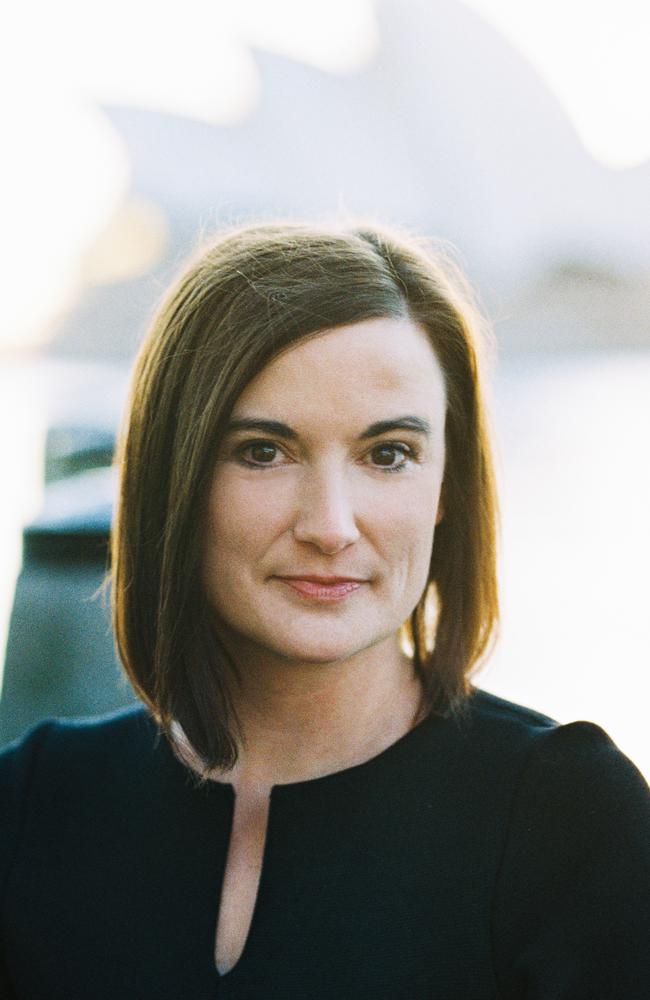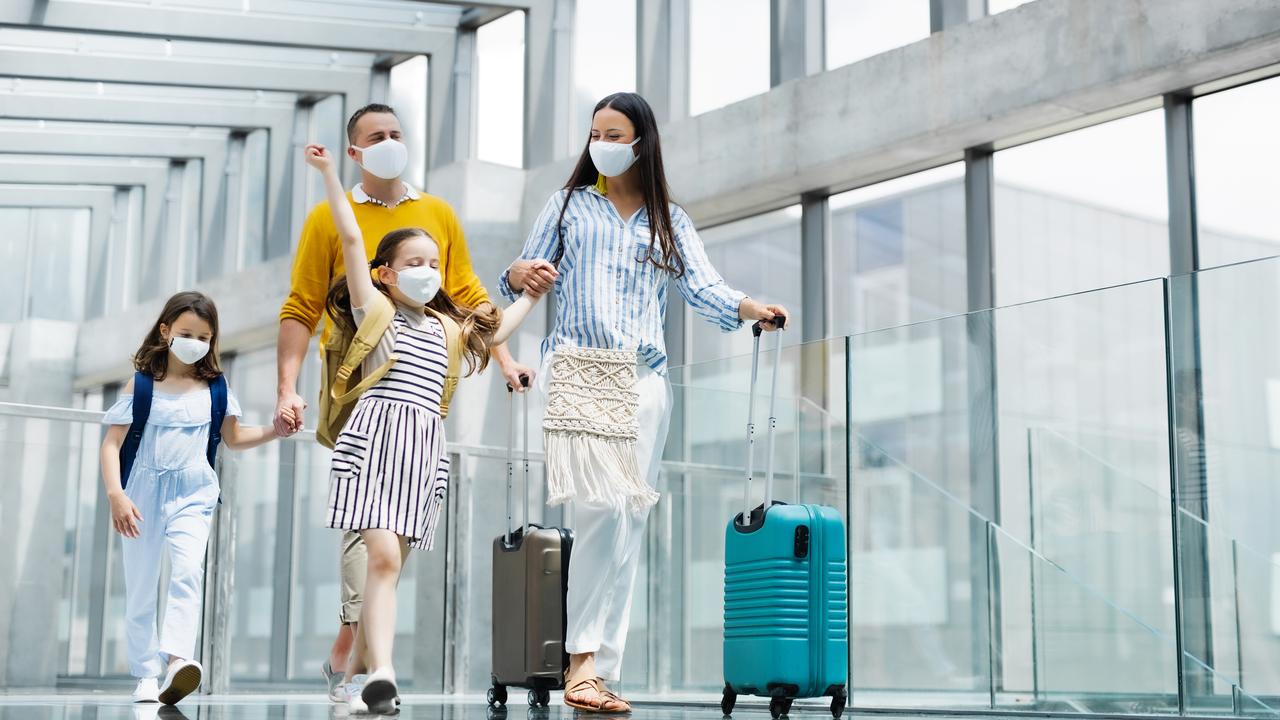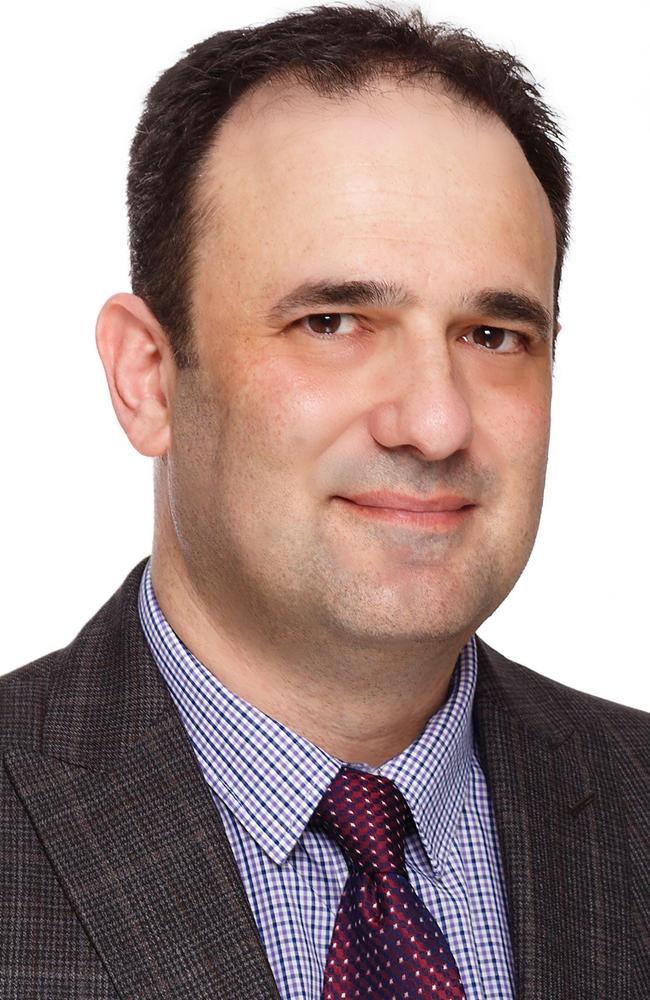Back soon or banned: International travel won’t get back to normal til 2025
When will international travel start to return and which countries will we be able to visit first? Experts tell us the destinations set to come back sooner and which ones we’ll be waiting for.
QWeekend
Don't miss out on the headlines from QWeekend. Followed categories will be added to My News.
With the COVID-19 vaccine rolling out across Australia, thoughts are turning to escape.
As a nation famed for its love of adventure and exploration, itchy-footed Aussies – more than half of which have current passports – are relishing the idea of being able to head overseas again for the first time in more than a year.
Though an international travel ban is still in place – as are restrictions and quarantine measures of varying severity in countries around the world - Qantas and Jetstar have flagged a return to international services at the end of October; a move anticipated to allow the popular cruise industry to resume.

Health, hygiene and safety protocols have been a priority for organisations like the World Travel & Tourism Council during the forced lockdown period, designed to rebuild global consumer confidence and get the battered tourism sector up-and-running as soon as possible.
Still, just how, when and where we’ll be able to venture is not clear.
Qweekend asked four travel experts for their predictions and where they’ll personally be jetting off to first, given half the chance.

PROFESSOR BRENT RITCHIE
TOURISM CRISIS MANAGEMENT
Destination: New Zealand.
Quoting International Air Transport Association (IATA) predictions, Ritchie says international air travel is unlikely to return to close to pre-COVID-19 levels before the year 2024, or even 2025.
“We’ve never had anything like this effectively shut down international travel. The UNTWO (United Nations World Tourism Organisation) reports a 74 per cent decrease in international tourist arrivals globally.
“To give that some context, there was a four per cent reduction after the 2009 Global Financial Crisis, one per cent after the SARS crisis (2002-2004) and after September 11 [2001 terrorism attack in New York] international arrivals actually increased 0.1 per cent, so this is definitely an unprecedented time,’’ he says.
“In previous crises and disasters, it’s done and it’s over and we can resume recovery marketing and get people in; because this is so global and until we eradicate this thing, it’s going to be very, very difficult to do that.’’
The University of Queensland researcher says the eventual return to international travel for Australians is likely to be staged based on the effectiveness of individual countries’ responses to the pandemic and the ability to form “travel bubbles” with those countries.
He says even then, people will more likely travel solo or in small groups, and skip gateway cities or crowded destinations for more open, scenic areas.

“People do like to travel and do want to travel; they just need to have the air routes, the borders opening, that confidence they’re not going to get sick and that the costs are not going to outweigh the benefits,’’ Ritchie says.
“It will be a slow recovery but it will be different for different locations. A lot of the countries that have done best in containing COVID-19 are in the Asia-Pacific, so when we open up internationally, people are going to be taking shorter to medium-haul trips to places like New Zealand.
“Thailand has also done very well in dealing with COVID-19 and that’s a popular destination for Australian travellers; the other one is Vietnam.’’
Ritchie says the biggest motivation for travel, whether domestic or international, will be the desire to visit family and friends.
It’s the reason the Kiwi native, who has lived in Australia with his wife and two teenage children for more than 20 years, nominated a trip home as his first priority.
“Rather than holiday and leisure, people want to reconnect with friends and family … who can give them information on the ground, whether it’s safe to come and what the situation is.
“People may have lived in that country before; they have an affinity, friends there, family there. That’s the market that’s likely to bounce back quicker and be more resilient.
“The largest peak in international tourist arrivals globally in the past 20 years was in the year after SARS – a 9.4 per cent increase, that’s a big bounce back and about pent-up demand.’’
Ritchie says building consumer confidence could be as simple as encouraging people to start dreaming.
His 2020 study of American people, a population severely affected by COVID, found getting people to visualise their holiday decreased their risk perception and increased willingness to travel, though they might still delay taking the trip for a year.
“It’s a positive thing in some respects. Countries can’t do much in the way of tactical marketing and calls to action right now, but it’s actually more about the dreaming, the anticipation phase, getting people thinking about them and the destination, and keeping that destination top of mind for when [borders] do open up.’’

ADELE LABIN-ROMAIN
TOURISM LEAD, DELOITTES ACCESS ECONOMICS
Destination: Canada
“When can we travel again? That’s the $65 billion question, that’s what it is.’’
Of the three possible scenarios Labin-Romain mapped out earlier this year for the resumption of international tourism, she says Australia is following the harsh trajectory – at the moment.
Given a trans-Tasman travel bubble and a mid-year vaccine rollout, this scenario predicts aviation capacity will reach pre-COVID levels by the end of the year, with consumer confidence and travel preference at pre-pandemic levels by mid-2022.
By contrast, the severe scenario outlines travel restrictions not being lifted until next year, a shift to short-haul flight preferences and pre-COVID-19 demand not being reached again until 2025.
“The difference between the harsh and severe scenario is our capacity to welcome international visitors, and one of the things to watch is the potential for the travel between Australia and New Zealand,’’ Labin-Romain, 47, says.
“While I have some reasonably firm views that it’s an uneven opportunity – if we direct a quarter of what Australian visitors normally spend overseas, it would more than make-up for the entire shortfall of international visitors to New Zealand, but if New Zealand directed a quarter of what they spent overseas here, we’d get an additional $2 billion, a very small impact overall.
“The biggest benefit will be testing our protocols and getting ready to welcome international visitors; our infrastructure, our transport protocols, understanding who is coming, where they’re sitting in terms of vaccination and testing.’’

Rabin-Lomain, formerly head of strategy at Tourism Australia, also predicts Asia will be the first market to open to Australians – though she says only about 20-30 per cent of the nation’s population believe it is safe to fly.
“Japan, Korea, Taiwan, these are actually reasonably important markets, in terms of previous international visitors, so having them back would be fantastic. Singapore is another market that has an effective response.
“They’re also not long-haul flights, so that’s in of itself a benefit in terms of travel and confidence to travel, and confidence to plan trips at reasonably short notice.’’
Rabin-Lomain says it’s “too risky” and would be a “long time” before visitors from the UK and USA were welcomed to Australia, though the number of Australians travelling there for family reasons would likely continue to increase.
Her family’s first overseas trip would be visit her and her husband’s parents and extended family in their native Canada.
“I do think we have a pent-up demand for travel. Travel is at the top of the list or near the top of the list of what we missed last year. [Australians] used to take 10 million overseas trips, so we have missed that absolutely, but there will be a part of the population that will be very wary about travelling overseas for some period of time. That return to those 10 million volumes will take a couple of years to get there at a minimum,’’ she says.
“The choices [of destination] will be different as a result of the reflection and soul-searching we’ve been doing over the past year, but also in what companies and individual operations and destinations are on offer.’’

JOEL KATZ
CRUISE LINE INTERNATIONAL ASSOCIATION (CLIA)
Destination: Remote Australia
With the Federal Government’s international travel ban extended until June, Joel Katz, CLIA’s Australasia managing director, says the primary focus has to remain on resumption of domestic cruising.
Katz, who has been in talks with the government for six months, says “there’s no discussion on international cruising at this stage” and “it’s not possible to forecast future outlooks” on how long it will take the $5b cruise industry to recover.
“There are more than 40 cruise ports around Australia including a lot of remote destinations and regional areas, which will be ideal to explore under domestic cruising resumption,’’ he says, in a written statement.
“In time, depending on the status of COVID-19 and Australia’s border restrictions, cruising could potentially expand to regional bubbles such as New Zealand or nearby Pacific Islands, but this is contingent on the guidance of health authorities at the time.’’
Katz says all prospective passengers would be required to have a negative COVID-19 test, undergo pre-boarding health screening, complete a health declaration for illness and contact history screening, and attest to willingness to abide by health protocols.

“The defining feature of cruising from 2021 onwards will be the heightened focus on health and safety in response to the pandemic, with extensive new measures covering virtually every aspect of cruising from booking through to returning home,’’ he says.
Katz says research shows 80-90 per cent of people are willing to comply in order to cruise, with up to 75 per cent of past cruisers worldwide wanting to hit the high seas again within the next few years and 45 per cent within the next year.
Limited cruising has resumed in some parts of the world, with many international companies reporting strong demand and sellout European and North American itineraries for 2022 and 2023.
“Anecdotally, many cruise operators are reporting strong interest in future cruises, including large numbers of people who have opted to postpone their bookings or take future cruise credits, rather than cancel,’’ says Katz.
“The pandemic has changed consumer patterns in all areas of travel and it’s difficult to say how individual demographics will respond once cruising resumes.
“What we do know is that there’s an existing committed population of cruise fans in Australia who are keen to return to sea, and that many of the most passionate cruisers will be among the first to return when the time is right to sail again.
“For me, the ability to reach remote communities and unspoilt areas [within Australia] by sea will be the best thing to look forward to when cruising resumes.’’

ANTHONY BIANCO aka @thetraveltart
TRAVEL WRITER/BLOGGER
Destination: Antarctica
Humour is Anthony Bianco’s way of coping with pandemic and the toll it has taken on avid travellers’ ability to explore the world, something previously taken for granted.
“My passport and frequent flyer points have never felt so useless. Travel is a privilege, not a right, and I really miss learning about new cultures, trying new food and creating new brain pathways with great experiences when it comes to international travel,’’ says Bianco, a Brisbane-based travel writer/blogger who has explored more than 50 countries, and worked for a travel insurance company until made redundant in late 2019.
“On a humorous note, the amount of selfie-taking in front of tourist cliches has dropped dramatically since the pandemic began, plus it looks there won’t be any new episodes of [TV series] Border Security produced for a while.
“I (also) saw a great joke that said ‘I dream of the day when I will walk down the aisle and hear those magical words: This is your pilot speaking!”
Bianco says the vaccine rollout is “not a silver bullet to eradicate’’ the virus and we’re likely to be living with the virus “in some shape or form for some time”, so he can’t see overseas travel returning until “sometime in 2022” and even then, flight volumes will take some time to recover to pre-COVID-19 levels.

“Qantas has their A380s stored in the Mojave Desert [North America] until at least 2023, so they must have received some decent advice about how long this is going to last by someone qualified, considering the cost of flying them there and that it still costs $5000 a week to keep them airworthy while they’re on the ground.’’
But, he says, once travellers are confident they will be able to return home easily and without the fear of being stranded, demand will “go through the roof”.
“I have a friend who has invested in a lot of travel company shares because they’re dirt cheap right now, but he’s banking on a huge demand when we’re able to travel again. When we have some resemblance of pre-COVID-19 times, those who will be able to travel, will be travelling. But that’s assuming there are enough airlines, accommodation providers and experience providers around by the then.’’
Asked for the destination top of his list once international travel resumes, Bianco laughs. “Anywhere with a fairly low chance of a fatal visit! I’ve always wanted to go to Antarctica as this is the only continent I haven’t reached yet. I’ll go almost anywhere as I’ve never regretted visiting the 50+ countries I’ve been too.’’





